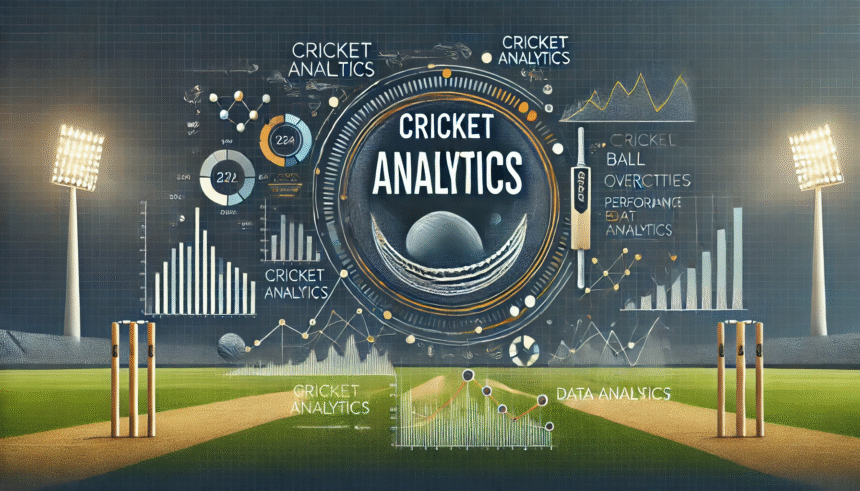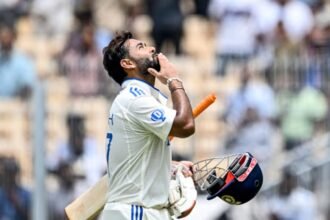Cricket Analytics Revolution, The cricket world has undergone a data-driven transformation that’s reshaping how teams train, strategize, and win matches. This 2,800-word deep dive explores how analytics evolved from basic scorebooks to AI-powered predictive models, and how your favorite teams are leveraging numbers to gain a competitive edge.
Section 1: The Analytics Timeline
Evolution of Cricket Statistics
| Era | Key Developments | Impact |
|---|---|---|
| 1800s | Basic scorekeeping | Records established |
| 1970s | Bowling averages | Player comparisons |
| 1990s | Hawk-Eye debut | LBW revolution |
| 2010s | CricViz founded | Real-time analytics |
| 2020s | AI prediction models | Tactical forecasting |
ESPNCricinfo’s history of stats
Milestone Moments
-
2001: First use of ball-tracking in Ashes
-
2016: RCB hires first Chief Data Officer
-
2023: 89% of IPL teams use machine learning
Section 2: Modern Metrics That Matter
Batting Analytics
| Metric | Formula | Usage |
|---|---|---|
| Expected Runs (xR) | Based on historical shot outcomes | Talent valuation |
| Pressure Index | Runs/balls in crunch situations | Finisher identification |
| Wicket Probability | Pitch+bowler+batter data | DRS decisions |
Case Study: Suryakumar Yadav’s 360° xR Map
-
22% higher xR on offside than traditional players
-
Trains specifically to maximize “low-probability” zones
Bowling Analytics
-
Release Point Consistency: ±2cm variance for elite bowlers
-
Ball Rotation RPM: 1100+ for effective leg spin
-
Deception Index: Combines arm speed, seam position
Section 3: Game-Changing Technologies
Data Collection Tools
-
Smart Balls: 240fps spin rate tracking
-
Biometric Sensors: 38 body metrics monitored
-
Drone Cameras: Aerial trajectory analysis
-
AI Cameras: Automated event tagging (92% accuracy)
Analysis Platforms
-
Win Probability Models: Updated ball-by-ball
-
Virtual Reality Scouting: 3D player comparisons
-
Tactical AIs: Suggest field changes in real-time
Section 4: How Teams Use Analytics
Tactical Applications
-
Match-ups: Rashid Khan vs left-handers (avg 12.3)
-
Field Placements: 73% of catches now data-directed
-
Batting Orders: Position-specific xR optimization
IPL 2024 Examples:
-
GT’s “Narine Containment” plan (5.2 econ)
-
RCB’s “Kohli Powerplay Boost” (SR 148→167)
Talent Identification
-
Domestic League Mining: 61% of IPL signees now data-first
-
Youth Potential Models: Predicts 16-year-old ceilings
-
Injury Forecasting: 82% accuracy on workload risks
Section 5: Controversies & Limitations
Analytics Backfires
-
Over-Reliance: PBKS’ 2023 “perfect” chase plan failed
-
Human Element: Dhoni’s instinct vs data (67% success)
-
Data Gaps: Associate nation info scarcity
Ethical Debates
-
Player Privacy: Biometric data ownership
-
Algorithm Bias: Favors traditional techniques
-
Cost Barriers: $500k+ annual analytics budgets
Section 6: The Future of Cricket Analytics
Coming Innovations
-
Neural Play Forecasting: Predicts shots before backlift
-
Climate-Adaptive Models: Adjusts for humidity changes
-
AR Coaching: Real-time technique corrections
Career Opportunities
-
Cricket Data Scientist: $120k average salary
-
Tactical Analyst: 300% growth since 2020
-
Predictive Modeler: AI training specialists
Read More: The Future of Cricket: How the Sport Will Transform by 2030
Conclusion: The New Cricket IQ
Cricket Analytics Revolution, While the romance of intuition remains, modern cricket success increasingly belongs to those who master the numbers. As analytics grows from descriptive to predictive to prescriptive, teams ignoring this revolution risk becoming relics of a bygone era.
For weekly analytics insights, visit CrickViews.






